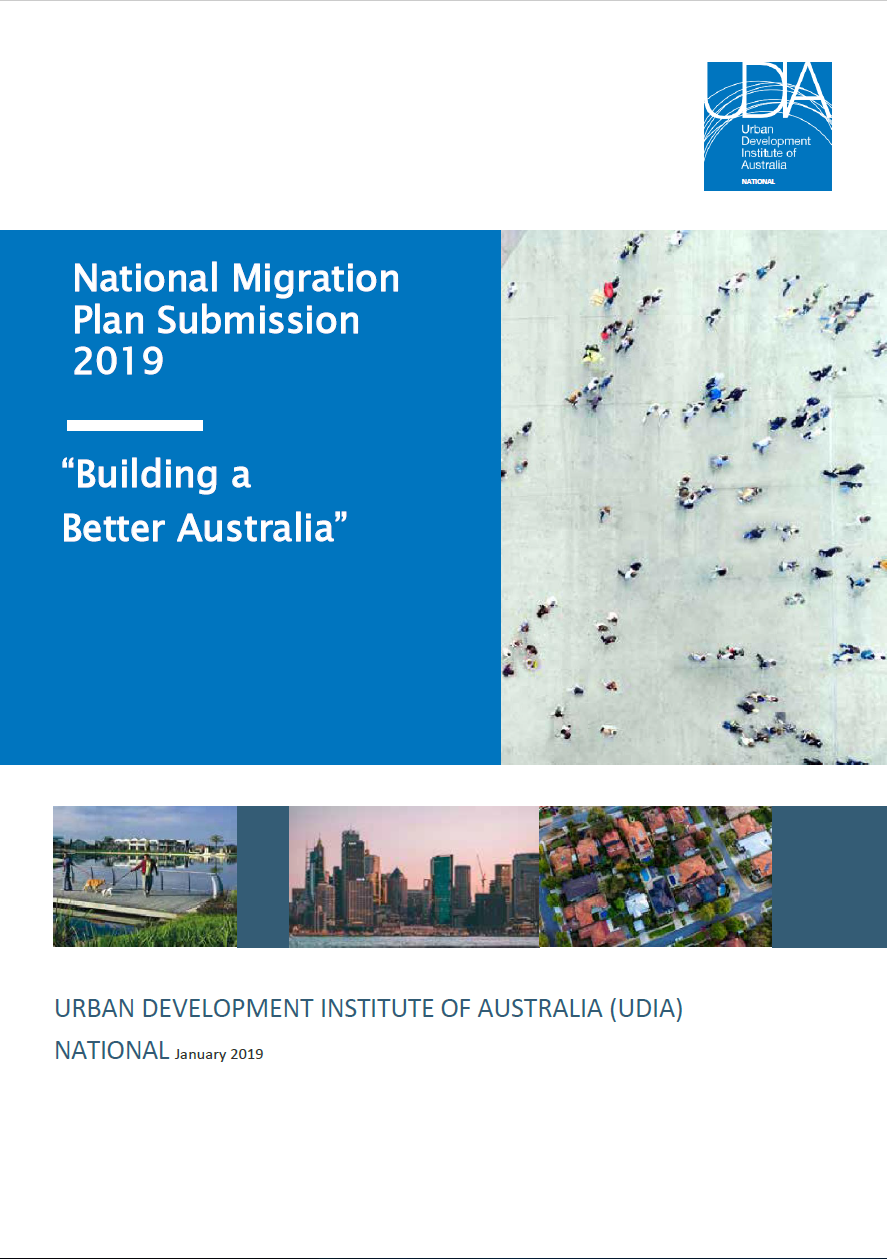UDIA supports the recommendations on the Australia’s 2019/20 Migration Program, and notes that 162,417 migrants came to Australia in 2017/18. In total 68.9% of migrants were skilled, which is key to supporting the Australian economy and continuing Australia’s 27 years of uninterrupted economic growth which is revered around the world. UDIA is keen to engage with The Department of Home Affairs on how the skilled worker classes can better assist the development industry to build the houses and infrastructure needed for the growing Australian population.
The UDIA advises that migration and population settings need to be carefully considered and inform strategic land use planning to ensure our cities prosper in a globally competitive market. Unco-ordinated planning across Australia has left some major cities with housing backlogs, driving up prices. Other Australian cities like Perth in WA and Adelaide in SA would welcome additional migration but have lacked Local, State and Federal co-ordination to build the infrastructure needed to attract migrants or incentivise the populations to remain. Some of these cities – like Adelaide, have now begun developing State strategies and policy levers to incentivise and support a greater intake of migrants. The UDIA suggests that the migration plan work closely with other arms of Local and State Government to;
- Establish regular short/medium/long-term population forecasts to better inform strategic land-use and infrastructure plans.
- Identify the base level of services expected for key elements of liveability to accommodate a larger population including housing affordability measures, transport, key infrastructure and the environment.
- Use data to inform a national strategic population plan that predicts infrastructure and housing requirements, to accommodate population growth and delivers detailed, costed infrastructure and land release plans, including delivery time frames.
- Examine options for settlement planning to ensure the benefits of population growth are more evenly distributed across Australia inclusive of employment opportunities. This would also need attention to support jobs, social infrastructure and land use planning.
- Infrastructure and federal tax grants to states to be aligned with the infrastructure needs required to accommodate the aforementioned population forecasts.

